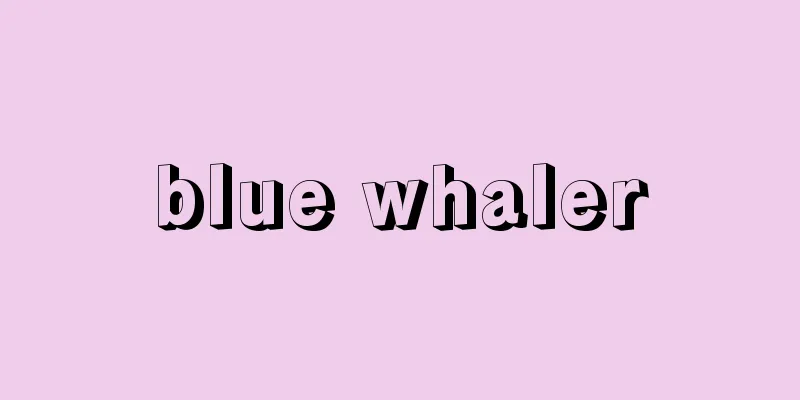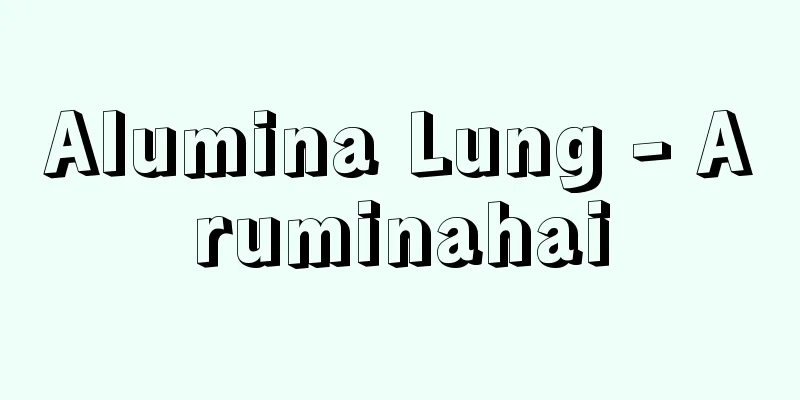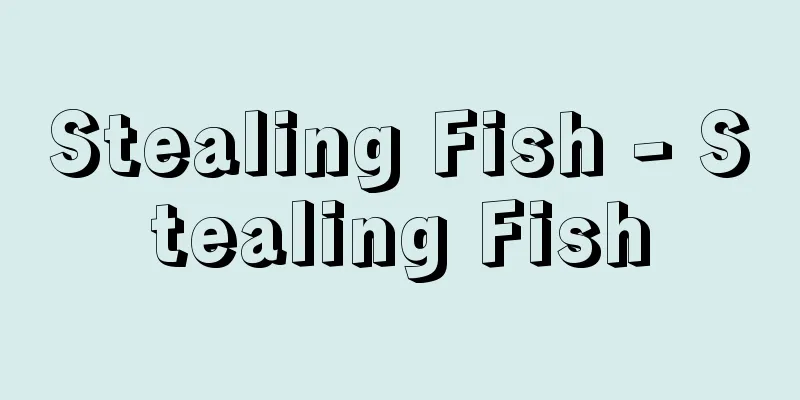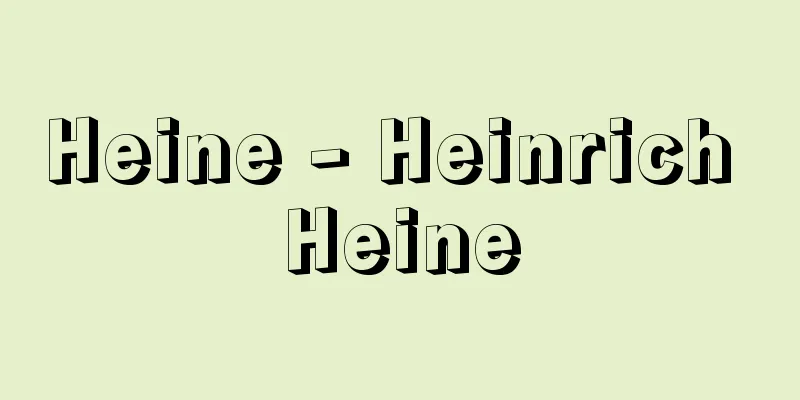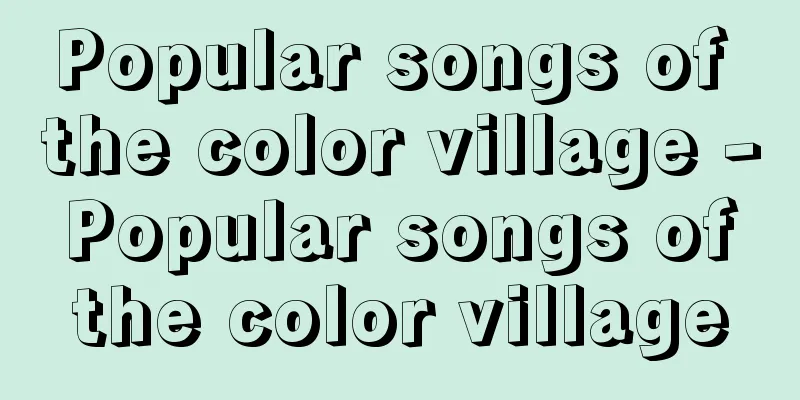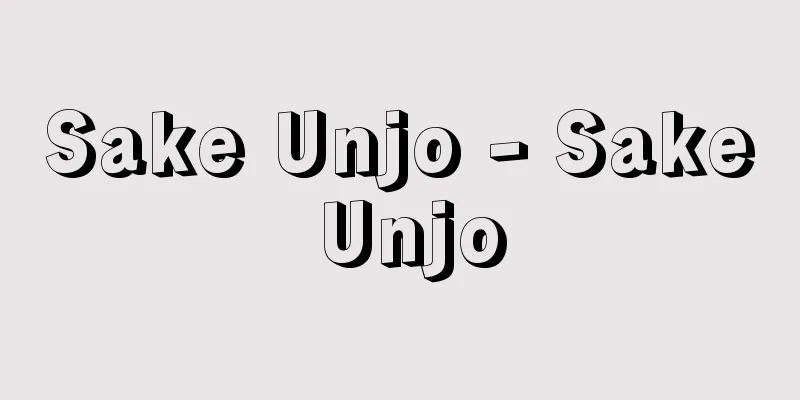Pesticides - pesticides
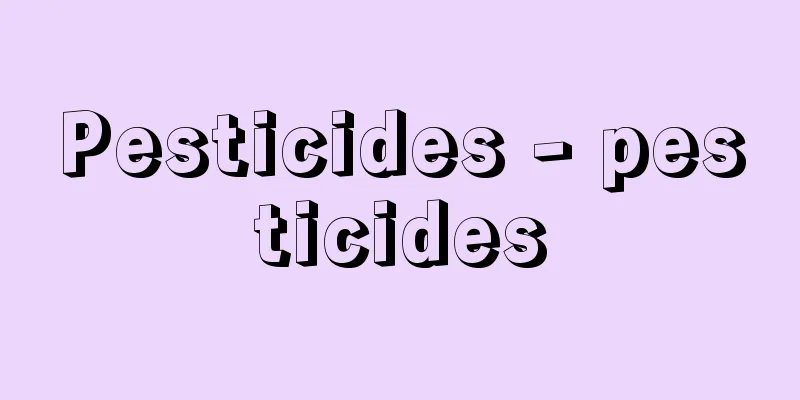
|
Agricultural chemicals. In Japan's Agricultural Chemicals Control Act, "pesticides" are defined as fungicides, insecticides, and other chemicals (including materials that use such chemicals as raw materials or ingredients and are used for said control, as specified by government ordinance) used to control bacteria, nematodes, mites, insects, mice, and other animals and plants, or viruses (collectively referred to as pests) that harm agricultural crops (including trees and agricultural and forestry products; hereafter referred to as agricultural crops, etc.), as well as growth promoters, germination inhibitors, and other chemicals used to promote or suppress the physiological functions of agricultural crops, etc." It also stipulates that "natural enemies" used to control pests of agricultural crops, etc. are considered to be pesticides. In Japan, what is generally referred to as pesticides are chemicals used to control (prevent and eliminate) pests (a general term for pathogens and pests) on agricultural crops, but this does not necessarily refer to all chemicals used in agriculture; the term is more accurately understood as chemicals used on plants (excluding fertilizers). Livestock farming is a part of agriculture, but chemicals used to treat livestock diseases and disinfect livestock sheds are not called pesticides, nor are chemicals used in fish farming. Chemical fertilizers are also chemicals used in agriculture, but in Japan they are not included in the concept of pesticides. A literal translation of agricultural chemicals would be agricultural drugs, but the Western concept of this word includes not only what is called pesticides in Japan, but also chemical fertilizers. Chemicals used to control plant pests, chemicals for sanitary pests, and chemicals used to eliminate pests (damage caused by pests) that directly or indirectly inflict on humans in relation to textiles, leather, buildings, etc. are collectively called pesticides or economic poisons in English, but this also does not match the Japanese concept of pesticides. There is no suitable foreign word that matches the Japanese term pesticides. All countries agree that the most important pesticides are those used to control pests and weeds that hinder the cultivation of agricultural crops. The handling of sanitary pesticides for flies and mosquitoes and anthelmintics for livestock varies from country to country. [Murata Michio and Saito Ya] History of pesticide developmentThere are records from before Christ of the use of Veratrum sativum, an insecticidal plant, and the use of Lilium longiflorum as a rat poison, as well as of sulfur fumigation. Chemical control of pests became more evident around the 17th century, with tobacco being used as an insecticide in France in 1690, and Jojoba daisy in the Caucasus region from around 1800. In the 19th century, pesticides appeared in the form of chemicals, with a sulfur powder soap mixture being used to treat grape powdery mildew in 1821, and copper sulfate being used to disinfect seeds. Lime sulfur, which is still used in large quantities today, was developed in 1851 for powdery mildew, and Bordeaux mixture was developed in 1885 in the Bordeaux region of France for grape mildew. In 1867, the edible poisoning effect of Paris green, an arsenic pigment, was discovered, and lead arsenate appeared in 1907 as a result of efforts to streamline chemical structures. Many of the pesticides currently in use are organic synthetic compounds, which began around 1930 with the elucidation of the chemical structures of plant-based insecticides such as pyrethrins from Cabbage, rotenone from Derris, and nicotine from tobacco. After that, two research directions were taken: searching for more rational insecticides by studying analogous compounds of natural ingredients, and randomly testing various organic synthetic compounds to obtain targeted compounds. Many of the pesticides currently in use are based on substances with new chemical structures discovered by the latter method, and have been developed by searching for related compounds in the vicinity. The first great success using this method was the discovery of DDT by Paul Muller (Geigy of Switzerland) in 1939, for which he was awarded the Nobel Prize in Physiology or Medicine. The main ones include insecticides such as TEPP (1942), BHC (1943), parathion (1944), and isorane (1947), fungicides such as thiram (1931) and zineb (1943), and herbicides such as 2,4-dichlorophenoxyacetic acid (2,4-D) (1942) and IPC (1945). In Japan, the oldest recorded pesticide is the "Kaden Zachusan" from 1600 (Keicho 5). It is said to have been effective in repelling planthoppers and wild boars, with five types of ingredients including monkshood and camphor mixed together. In 1670 (Kanbun 10), whale oil was spread on rice paddies to brush off planthoppers from the rice, but in the Meiji period, it became an oil-based extermination method using petroleum and other substances, and continued until the early Showa period. There are also records of the use of human urine, melted snow, lime, and sulfur, but their effectiveness is questionable. Before World War I, pesticides derived from natural products such as daisy, insecticides using nicotine sulfate, and fungicides using copper, lime, and sulfur were used. In 1892 (Meiji 15), Bordeaux mixture was tried out, and daisy preparations and lime-sulfur mixtures were used. In 1919 (Taisho 8), the effectiveness of chloropicrin against stored grain pests was discovered. Nicotine sulfate was used as an insecticide in 1923, arsenicals in 1930 (Showa 5), and mercurials as seed disinfectants in 1934. In the 1930s and 1940s, in line with the global trend toward development, organic compounds that could be mass-synthesized were successively put into practical use and introduced as insecticides. However, no consideration was given to the impact these compounds had on living organisms, including humans, or the environment. In 1961, Hiroshi Yonehara and Tomomasa Misato of Japan discovered a mercury-free drug called blasticidin S, which is effective against rice blast disease. It was the first time in the world that an antibiotic was used as a pesticide. In 1971, the Agricultural Chemicals Control Law was revised to set the objectives as "protecting the health of the people" and "preserving the living environment of the people." In addition to the effectiveness against pests, it became mandatory to submit test results such as toxicity tests on warm-blooded animals (homeothermic animals), environmental impact, and residue surveys in crops and soil when registering pesticides. As a result, DDT, BBC, BHC, and mercury preparations were banned from sale or their use was restricted due to their high residual properties and toxicity to humans. Furthermore, with the revision in 2002, the regulation changed from being centered on the sale of pesticides to being regulated in all processes from manufacture, import, sale, and use. [Murata Michio and Saito Ya] Types and forms of pesticidesThe majority of plant diseases in Japan affect agricultural crops. Over 2,400 species of pests have been reported, of which about 10% are introduced species from overseas. Most damage is caused by feeding, but growth disorders and transmission of viral diseases also occur. The targets of pesticides are classified as follows according to their use: (1) Insecticides: Many of these have an insecticidal effect by acting on the nervous system of insects. They also control insects by inhibiting molting or reducing the number of eggs laid. Acaricides that control mites are also included. (2) Fungicides These prevent diseases caused by pathogens such as mold. There are non-systemic fungicides (which inhibit the enzymes of pathogens on the plant surface) and systemic pesticides (which are absorbed through the leaves and roots and are effective against pathogens that are multiplying inside the plant body). (3) Insecticides and fungicides: Protect against both pests and diseases. (4) Herbicides There are selective herbicides that kill only weeds by taking advantage of slight differences between crops and weeds (differences in the amount of ingredients absorbed and metabolism), and non-selective herbicides that kill all the grass they are exposed to. Herbicides have many effects, such as disrupting plant growth hormones, suppressing photosynthesis, and inhibiting the plant's own amino acid synthesis enzymes. (5) Rodenticides: Used to control animals such as rats that damage crops. (6) Plant growth regulators: These promote or inhibit the growth of agricultural crops. (7) Attractants and repellents These are primarily used to lure pests with scent or other means and then control them en masse, or to keep pests and animals away. (8) Wetting agent: Used in combination with other pesticides to increase the adhesion of the pesticides. (9) Natural enemies: Natural enemies of pests, such as fungi that parasitize pests or predators, are used instead of pesticides. They are safer than chemical pesticides and can reduce the amount of pesticide used, but there are concerns about the impact of invasive species on the ecosystem. (10) Chemical sterilants are mixed with food and given to insects to sterilize the males or females, thereby inhibiting reproduction. (11) Microbial agents: Microorganisms are used to control crop pests, diseases, etc. (12) Synergist: A drug added to enhance the efficacy of the main ingredient. (13) Adjuvants: Used to mix with other pesticides to make them easier to use. Pesticides come in various forms (solutions and emulsions), powders, granules, gases, fumigations, aerosols and pastes, while their application methods include spraying, small-volume scattering of concentrated liquids, dusting, fumigation, irrigation, fumigation, painting, immersion and poison bait. [Murata Michio and Saito Ya] Selection of pesticides to be usedThe basis for successful pest control is to select and use products with rational ingredients and formulations according to the intended purpose. Since various diseases and pests often occur at the same location at the same time, if a mixture of pesticides that are effective against each is prepared and sprayed, the number of sprays can be reduced, saving labor. However, there are cases where the combination is ineffective, toxic, or produces ingredients that cause damage due to the pesticide. The names of pesticides that should not be mixed are listed in the warnings on the label of each pesticide. Currently, there are almost no highly dangerous pesticides commercially available in Japan, but some are toxic or hazardous, so specialists select pesticides that are rational in terms of effectiveness. [Murata Michio and Saito Ya] Pesticide SafetyPesticides are registered after rigorous screening for toxicity, water pollution, effects on aquatic plants and animals, residual effects, etc., and standards for the use of each pesticide are established and compliance with these standards is mandatory to prevent any impact on the environment. It is essential to comply with the standards, such as not using the pesticide on crops where it is not applicable, following the application method and dosage, observing the application period, and using it within the total number of times. Regarding the impact on animals and plants, uniform standards have been set for carp, and tests are conducted using daphnia and a type of phytoplankton, the results of which are reflected in the precautions for pesticide use. Toxicity tests are also conducted using beneficial insects such as silkworms, honeybees, and natural enemy insects, as well as quails and mallards. Since pesticides destroy the lives of insects, fungi, and plants, it is not necessarily valid to think that any pesticide will have a more or less adverse effect on humans, who are living organisms. For example, pesticides that aim to kill organisms that have cell walls, such as fungi and grass cells, by using substances that inhibit the biosynthesis mechanism of cell wall components, have no effect on humans, whose cells do not have cell walls. In this way, pesticides aim to achieve their purpose by taking advantage of the qualitative and quantitative differences in the physiological effects of pests and diseases on the one hand and those of humans, livestock, and crops on the other. Controlling diseases and pests with pesticides is currently the most effective means of stabilizing the production and improving the quality of agricultural crops. The effectiveness of a pesticide decreases when it is used for many years because pests and diseases develop resistance. Mites and fungi, which have a fast rate of generational change, are prone to develop resistance, and to avoid this, it is necessary to use several types of pesticides in sequence. However, they will eventually develop resistance, so it is necessary to develop pesticides with different mechanisms of action. [Murata Michio and Saito Ya] Agricultural Chemicals Control Act and related lawsIn order to ensure the safety of pesticides, the Ministry of Agriculture, Forestry and Fisheries strictly regulates all processes from production and import to sale and use under the Agricultural Chemicals Control Law, which stipulates the use time, frequency and method of use for each type, formulation and crop of pesticide. The registration system is at the heart of this regulation. With some exceptions, only pesticides registered with the Ministry of Agriculture, Forestry and Fisheries can be manufactured, imported and sold in Japan. Currently, pesticide registration is carried out in cooperation with the Ministry of Agriculture, Forestry and Fisheries, the Ministry of the Environment and the Ministry of Health, Labour and Welfare, with the highest priority placed on safety evaluation from the perspectives of stable agricultural production, maintaining the health of the people and the living environment. As of 2009, 259 items in four categories have been set. Use outside agriculture (for household and industrial use) is controlled by the Pharmaceutical Affairs Law and other laws. The purposes of using pesticides are to eradicate pests, promote or inhibit growth, change planting periods, increase crop yields, ensure a stable supply of crops, and reduce the labor required for farming. At the same time, issues regarding the health of agricultural workers and residual pesticides on crops have come to the forefront, and it has become necessary to consider both the necessity of pesticides and contamination. Acutely toxic pesticides may cause poisoning if ingested in large quantities during spraying. Acute toxicity refers to the properties of substances that cause acute poisoning, and a single ingestion can cause physiological abnormalities in a short period of time during the day. Even if a small amount is not enough to cause poisoning, if it is taken repeatedly over a long period of time and accumulates in the body without being metabolized or excreted, it can cause chronic poisoning, and residual pesticides in food are considered a problem. Most pesticides applied to crops are washed away or lost by rain or wind, or broken down by sunlight or plant enzymes, but some may adhere to the surface of the crop and be absorbed by food and remain in the harvested product. The amount varies greatly depending on the type of crop, the ingredients of the pesticide, and the environment after application, but is very small. Although the residual amount does not pose a risk of acute poisoning, since agricultural products are consumed continuously, there should be no residual amount that causes chronic poisoning. Therefore, the pesticide residue standards set under the Food Sanitation Law revised in 1968 (Showa 43) were set from the perspective of unintentional food additives. These standards were set based on scientific values and administrative judgment, taking into account the ADI (acceptable daily intake without adverse effects on health even if taken every day for a lifetime), calculated by multiplying the no-observed-effect amount from chronic toxicity tests in animal experiments by a safety factor, the average daily food intake calculated from food intake statistics of the nation, and the pesticide residue survey values under normal usage methods, and assuming that agricultural products are eaten in their original state after harvest, that is, without washing with water. Since the amount of residue in agricultural products varies depending on various factors, this is investigated experimentally, and safe use standards that do not exceed the residue standards are set under the Agricultural Chemicals Control Law. The standards are set for each type of pesticide as standards that users should adhere to, such as the type of target agricultural product, the amount used, the method of use, the period and frequency of use, and intervals, and are written on the label of the pesticide. Furthermore, with the amendment of the Agricultural Chemicals Control Law in 1971, crop-residual pesticides, soil-residual pesticides, and pesticides with high fish toxicity were designated as water-polluting pesticides, and strong restrictions and prohibitions were implemented to prevent pollution. Furthermore, in May 2006, the "positive list" system was introduced. This is a system that in principle prohibits the manufacture, processing, and sale of foods that contain pesticides, veterinary medicines, and feed additives that do not have residue standards set for food. Among these, it stipulates that those with residue standards must not remain in foods at concentrations that exceed the residue standards set for each food, that 65 substances notified as exempt substances are not regulated even if they remain in food, and that even in foods for which no residue standards have been set, they must not remain in foods at concentrations exceeding 0.01 ppm (uniform standard). [Murata Michio and Saito Ya] Production and consumption trendsRecent production trends include a decrease in registered pesticides, an increase in generic pesticides (pesticides that use the same active ingredients after the patent period has expired; low-cost as there are no development costs), and a decrease in newly developed products. It takes a huge amount of money, 3 to 5 billion yen, and a development period ranging from seven years to more than 20 years in some cases, before a new pesticide can be sold, and it is said that only one in every 50,000 new compounds is commercialized. Research expenses account for 6 to 10% of sales. There are two types of pesticide manufacturers: active ingredient manufacturers that make the active ingredients, and formulation manufacturers that turn the active ingredients into formulations to make products. In Japan, there is a lot of rice cultivation, so the volume of pesticides shipped for paddy fields is high. According to statistics from the Organization for Economic Cooperation and Development (OECD), Japan's use of pesticides fell by 27% between 1990 and 2003. This is thought to be due to a decline in crop production and a shift to organic farming methods. However, among OECD member countries, Japan has the second highest pesticide use per hectare after South Korea, which is thought to be related to the hot and humid summer environment that makes it easy for pests to develop. [Murata Michio and Saito Ya] "Environmental Science of Pesticides - The Behavior of Pesticides in the Environment and Their Effects on Non-target Organisms" by Jun Kanazawa (1992, Godo Publishing)" ▽ "The Latest Pesticide Data Book" edited by Chojiro Tomizawa, Masako Kamiji, and Masaji Koshioka, revised and expanded edition (1997, Soft Sciences)" ▽ "New Pesticide Science - The New Mission of Pesticides in 21st Century Agriculture" by Shoichi Matsunaka (1998, Soft Sciences)" ▽ "Pesticide Theory from the Origin - From the Viewpoint of Living Creatures" by Chisato Hirano (1998, Rural Culture Association)" ▽ "Changing Pesticides - Doors Opened by the Environmental Renaissance" by Hiroshi Fukami (1998, Kagaku Dojin)" ▽ "Aerial Spraying of Pesticides and Environmental Hormones - An Appeal from a Resident Lawsuit Against Aerial Spraying" by Chikara Kuji (1998, Shinsensha)" ▽ "The Latest Pesticide Science" edited by Tetsuo Inoue (1999, Hirokawa Shoten)" ▽ "Production and distribution techniques for organic and reduced-pesticide agricultural products - exploring the potential of biological pesticides in integrated pest control" (1999, NTS) " ▽ "Microbial pesticides - aiming for environmentally friendly agriculture" edited by Yamada Masao (2000, National Rural Education Association)" ▽ "Why did pests come into being? - from the pre-pesticide era to organic farming" by Koyama Shigeo (2000, Tokai University Press)" ▽ "Encyclopedia of pesticide science" edited by Motoyama Naoki (2001, Asakura Publishing)" ▽ "Pesticide theory - 50 years of pesticides" by Nakaminami Hajime (2001, Hokuto Publishing)" ▽ "Development capabilities and prospects of pesticide manufacturers - development track record, introductions, alliances, M&A of 32 companies around the world" by Shibuya Narumi (2001, CMC Publishing)" ▽ "Methods for Analysing Pesticide Residues," edited by Masako Ueji, Yuko Kobayashi and Koji Nakamura (2001, Soft Sciences Publishing) " ▽ "Food Safety Seminar 3: Pesticide Residues," edited by Yutaro Hosogai and Masao Matsumoto, written by Masako Ueji and Toshihiro Nagayama (2002, Chuohoki Publishing)" ▽ "The History of Pesticides in Japan," written by Shoichi Matsunaka (2002, Academic Press Center)" ▽ "Food Pollution and Pesticide Contamination: The Shaking Safety of Food," edited by Ryo Kurata and Toshiyuki Yoshino, written by Kazuo Kasuga (2002, Hitotsubashi Publishing)" ▽ "Encyclopedia of Pesticide Toxicity, revised edition, written by Shinsaku Uemura, Hiroshi Kawamura, Machiko Tsuji, Shigeyuki Tomita and Shizuo Maeda (2002, Sanseido)" ▽ "General Description of Pesticides, 4th Edition (2002, Japan Plant Protection Association), supervised by the Ministry of Agriculture, Forestry and Fisheries Production Bureau Production Materials Division and Plant Protection Division, and compiled by the National Council for Plant Protection" ▽ "Pesticide Development in Japan, edited by Mitsuru Sasaki, Kenji Umezu, Hitoshi Saka, Kanji Nakamura, and Kenji Hamada (2003, Pesticide Science Society of Japan, Soft Science Publishing)" ▽ "Next-generation Pesticide Development -- Search and Creation Using New Nanotechnology," edited by the Pesticide Science Society of Japan (2003, Soft Science Publishing)" ▽ "Questioning Food Safety -- Pesticides Now ," edited by the Association of Agricultural Policy Journalists (2003, Agriculture and Forestry Statistics Association)" ▽ "Reducing Pesticide Use by Half through the Use of Natural Enemies -- Actual Crop-Specific Pest Control," edited by Hisashi Nemoto (2003, Rural Culture Association)" ▽ "The Cutting Edge of New Pesticide Development -- Expanding into Biological Control Science," written by Izuru Yamamoto (2003, CMC Publishing)" ▽ "Crop Health: Protecting Plants from the Harm of Pesticides," written by Francis Chabussoux and translated by Nakamura Eiji (2003, Yasaka Shobo)" ▽ "The Development History and Outlook of Major Pesticides," popular edition, edited by Ikura Katsuyata (2003, CMC Publishing)" ▽ "Pesticide Handbook, 10th edition, edited by Yoneyama Shingo, Ando Kazuhiko, and Tsuzuki Tsukasayuki (2004, Rural Culture Association)" ▽ "Pesticide Handbook, various annual editions, edited by the Agricultural and Horticultural Bureau of the Ministry of Agriculture, Forestry and Fisheries and compiled and published by the Japan Plant Protection Association" ▽ "The Pesticide Situation in Japan," written by Kono Shuichiro (Iwanami Shinsho)" ▽ "Fighting Pests Without Pesticides, written by Ito Yoshiaki and Kakihana Hiroyuki (Iwanami Junior Shinsho)" [Reference items] | | | | | | | | | | | | | | | | | | | | | | | | | | | | | | | | | | |Source: Shogakukan Encyclopedia Nipponica About Encyclopedia Nipponica Information | Legend |
|
農業薬剤のこと。日本の農薬取締法では「農薬とは、農作物(樹木及び農林産物を含む。以下農作物等という。)を害する菌、線虫、だに、昆虫、ねずみその他の動植物又はウイルス(以下病害虫と総称する。)の防除に用いられる殺菌剤、殺虫剤その他の薬剤(その薬剤を原料又は材料として使用した資材で当該防除に用いられるもののうち政令で定めるものを含む。)及び農作物等の生理機能の増進又は抑制に用いられる成長促進剤、発芽抑制剤その他の薬剤をいう」と定義され、農作物等の病害虫を防除するための「天敵」も農薬とみなすとされている。 日本で一般に農薬といわれるものは、農作物の病害虫(病原体と害虫の総称)を防除(予防および駆除)するためなどに使用される薬剤であるが、かならずしも農業に使われる薬剤のすべてをさしているわけではなく、植物を対象に使用される薬剤(ただし肥料を除く)という概念のほうが実態に近い。畜産は農業の一環であるが、家畜の疾病や畜舎の消毒などに用いられる薬剤は農薬といわず、養魚関係に使う薬剤も農薬と呼称しない。化学肥料も農業に使う薬剤であるが、日本では農薬の概念に入れていない。 agricultural chemicalsを直訳すると農業薬剤となるが、このことばの欧米における概念は日本でいう農薬のほかに、化学肥料も包含している。植物の病害虫を防除する薬剤と衛生害虫用薬剤、および繊維や皮革や建築物などに関連して人類が直接あるいは間接に受ける病虫害(病害虫による被害)の排除に使われる薬剤を総称して、英語ではpesticidesまたはeconomic poisonsというが、これも日本の農薬の概念と一致しない。日本での農薬という用語に合致する適切な外国語はない。農薬のなかでもっとも重要なのが農作物を栽培するのに支障となる病害虫や雑草を防除するための薬剤であるということについては各国共通である。ハエやカなどの衛生害虫殺虫剤や家畜用の駆虫剤などの扱いは各国で異なる。 [村田道雄・斎藤 彌] 農薬発達の歴史紀元前から殺虫力のあるバイケイソウや鼠毒としてのカイソウ(ユリ科植物)の使用、硫黄(いおう)による燻蒸(くんじょう)の記録がある。薬剤による防除のやや明確になってきたのは17世紀ごろからで、殺虫用として1690年にフランスでタバコ、1800年前後からカフカス地方でジョチュウギク(ムシヨケギク)が用いられていた。19世紀に入って化学薬品の形で農薬が登場し、1821年に硫黄粉末せっけん混合液がブドウのうどんこ病に、硫酸銅が種子消毒用に利用されている。今日なお大量に使用されている石灰硫黄合剤は1851年にうどんこ病用に、ボルドー液はブドウのべと病用として1885年にフランスのボルドー地方で開発された。1867年にヒ素化合物顔料であるパリスグリーンの食毒作用が発見され、化学構造の合理化の追求によりヒ酸鉛が1907年に登場している。 現在使われている農薬の多くは有機合成化合物であるが、この端緒は1930年ごろからジョチュウギクのピレトリン、デリスのロテノン、タバコのニコチンなど植物性殺虫成分の化学構造が解明されたことにある。その後、天然成分の類縁化合物を研究して、よりいっそうの合理的殺虫剤を求める方法と、ランダムに各種有機合成化合物を試験して合目的化合物を得る方法の二つの研究方向がとられた。現在使われている農薬は、後者の方法により発見された新規化学構造物質を基本とし、その周辺の類縁化合物を追究することから得られたものが多い。この方法による最初の大成功は、パウル・ミュラー(スイスのガイギー社)によるDDTの発見(1939)であり、彼はノーベル医学生理学賞を受賞した。以下主要なものをあげると、殺虫剤ではTEPP(テップ)(1942)、BHC(1943)、パラチオン(1944)、イソラン(1947)、殺菌剤ではチラム(1931)、ジネブ(1943)、除草剤では「2,4-ジクロロフェノキシ酢酸(2,4-D)」(1942)、IPC(1945)などである。 国内では、1600年(慶長5)の「家伝殺虫散」が記録に残っている日本最古の農薬といわれている。トリカブトや樟脳(しょうのう)など5種類を混合して、ウンカやイノシシよけに効果があったと伝えられている。1670年(寛文10)に鯨油を水田にまき、稲についたウンカを払い落とした方法が、明治になって石油などを用いた注油駆除法になり、昭和の初期まで続けられた。そのほかにも人尿、雪解け水、石灰、硫黄を使用した記録があるが、効果は不祥である。第一次世界大戦前は天然物由来の農薬であるジョチュウギク、硫酸ニコチンなどを用いた殺虫剤、銅、石灰、硫黄などの殺菌剤が使われていた。1892年(明治15)にボルドー液が試用され、ジョチュウギク製剤、石灰硫黄合剤が使用された。1919年(大正8)にクロルピクリンの貯穀害虫への効果がみいだされた。1923年に硫酸ニコチン、1930年(昭和5)にヒ素剤が殺虫剤として、また1934年に水銀剤が種子消毒剤として使われた。 1930~1940年代は、世界の開発趨勢にともない、大量に合成可能な有機化合物を殺虫剤として次々と実用化し導入した時代だが、ヒトを含む生物や環境に与える影響は考慮されなかった。 1961年(昭和36)、日本の米原弘・見里朝正らは、イモチ病に効く、水銀を含まない薬剤ブラストサイジンSを発見した。抗生物質を農薬として用いた世界初の例である。1971年、農薬取締法が改正され、「国民の健康の保護」と「国民の生活環境の保全」を目的に規定した。病害虫への効果は当然として、温血動物(恒温動物)に対する毒性試験、環境への影響、作物や土壌中の残留調査など試験成績の提出が農薬登録の際に義務づけられた。その結果、DDT、BBC、BHC、水銀製剤などは残留性およびヒトに対する毒性が高いとして、販売禁止や使用規制がなされた。さらに、2002年(平成14)の改正により、農薬の販売規制中心から、製造・輸入・販売・使用に至るすべての過程で規制されるようになった。 [村田道雄・斎藤 彌] 農薬の種類・形態日本における植物病害の大部分が農作物である。農作物の害虫として2400種あまりの報告があり、そのうちの約1割が外国からの移入種である。被害の大部分が食害であるが、生育障害、ウイルス病の媒介等もある。農薬の使用される対象は用途により次のように分類される。 (1)殺虫剤 昆虫の神経系に作用して殺虫作用を示すものが多い。また脱皮を阻害したり、産卵数を減少させて防除する。ダニを防除する殺ダニ剤も含まれる。 (2)殺菌剤 カビなどの病原菌による病気を防除する。非浸透性殺菌剤(表面についている病原菌の酵素を阻害)、浸透性農薬(葉や根から吸収され植物体内で繁殖している病原菌にまで効果を発揮)がある。 (3)殺虫・殺菌剤 害虫、病気を同時に防御する。 (4)除草剤 作物と雑草のわずかな相違(成分の取り込み量や代謝の差)を利用し、雑草だけを枯れさせる選択性除草剤と、薬剤のかかった草はすべて枯れる非選択性除草剤がある。除草剤は、植物の成長ホルモンの撹乱(かくらん)、光合成の抑制、植物独自のアミノ酸合成酵素の阻害作用など多くの作用を有する。 (5)殺鼠剤 農作物を加害するネズミなどの動物を防除する。 (6)植物成長調整剤 農作物の生育を促進または抑制する。 (7)誘引剤・忌避剤 主として害虫をにおいなどでおびき寄せてまとめて防除する、または害獣および害虫を寄せ付けない働きがある。 (8)展着剤 ほかの農薬と混合して使用し、その農薬の付着性を高める。 (9)天敵 害虫に寄生する菌や捕食者などの害虫の天敵を殺虫剤のかわりに使用する。化学農薬に比べて安全性が高く、農薬の使用量を減少できる一方で、外来種による生態系への影響も懸念される。 (10)化学不妊剤 えさに混ぜて昆虫に与え、オスまたはメスを不妊にし、繁殖を抑える。 (11)微生物剤 微生物を用いて作物の害虫・病気等を防除する。 (12)共力剤 主剤の効力を増強させるために添加される薬剤。 (13)補助剤 ほかの農薬に混ぜて、使いやすい剤形にする。 農薬の形態については、液剤(溶液・乳剤)、粉剤、粒剤、ガス剤、燻煙剤、エアロゾール剤、糊状剤が、また使用形態については、噴霧法、濃厚液少量散布法、散粉法、燻蒸法、灌注(かんちゅう)法、燻煙法、塗布法、浸漬(しんせき)法、毒餌(どくじ)法などがある。 [村田道雄・斎藤 彌] 使用農薬の選択使用目的に応じた合理的成分、剤形のものを選んで使用することが防除を成功させる基本である。同一地点で各種の病気や害虫が同時に発生する場合が多いため、それぞれに特効のある薬剤を配合した混合液を調製して散布すれば、散布回数が減って省力となる。しかし配合により無効化したり、有毒化したり、薬害発生成分を生ずる組合せになる場合もある。混合してはいけない農薬名は、各農薬のラベルの注意書きに記載してある。 なお、現在日本で市販されている農薬は危険性の高いものはほとんどないが、毒物や劇物に属する薬剤もあるので、効力との兼ね合いから合理的なものが専業者の使用農薬として選ばれている。 [村田道雄・斎藤 彌] 農薬の安全性農薬は毒性、水質汚濁性、水産動植物への影響、残留性等を厳格に審査して登録され、環境への影響が生じないようにそれぞれの農薬使用基準を定め、その遵守を義務付けている。適用のない作物には使用しない、使用方法・用量を守る、使用時期を遵守する、総使用回数以内で使用するなどの使用基準を守ることが基本である。 動植物への影響については、コイに対する一律の基準が設定されているほか、ミジンコ類や植物プランクトンの一種を使用した試験を行い、農薬使用上の注意に反映している。またカイコ、ミツバチ、天敵昆虫などの有用昆虫や、ウズラやマガモ等を用いた毒性試験を行っている。 農薬が虫や菌や草の生命を絶つのだから、生物である人間にも多かれ少なかれどんな農薬でも悪影響があろうという考え方はかならずしも妥当ではない。たとえば、菌や草の細胞のように細胞壁のある生物の、細胞壁成分の生合成機構を阻害する物質によってこれらの生物を殺すことをねらった農薬は、細胞壁をもたない細胞で構成されている人間などには影響がない。このように、病害虫と人畜や作物との生理作用の質的な差や量的な差をねらって目的を果たそうとするのが農薬である。農薬による病気、害虫等の防除は、農作物の安定生産と品質向上には現時点でもっとも有効な手段である。 同じ農薬を長年にわたり使用すると効果が落ちるのは、病害虫が抵抗性を獲得するからである。世代交代速度の速いダニや菌類は抵抗性を獲得しやすく、回避するには数種類の農薬を順に使用する必要がある。それでも最終的には抵抗性を獲得するので、作用の異なる農薬を開発する必要がある。 [村田道雄・斎藤 彌] 農薬取締法および関連法律農薬はその安全性の確保を図るため、農林水産省が農薬の種類・剤型・作物別に、使用時期、使用回数、使用法などについて定めた農薬取締法に基づき、製造、輸入から販売そして使用に至るすべての過程で厳しく規制される。その中心となっているのが登録制度である。一部の例外を除き、農林水産省に登録された農薬だけが国内で製造、輸入および販売ができる。現在の農薬登録は、農業生産の安定、国民の健康維持、生活環境の観点から、安全性の評価を最重点として農林水産省、環境省、厚生労働省が協力して行っている。2009年現在は4項目259品目が設定されている。農業以外での使用(家庭用・産業用)については薬事法等で管理される。 農薬使用の目的は、農作物の病害虫駆除、生育促進および抑制、植栽期の変更、農作物収量の増産、農作物の安定供給、および農作業の省力化にある。その一方で、農業従事者の健康や農作物への残留農薬問題がクローズアップされ、農薬の必要性と汚染への両面の配慮が要求されるようになった。 急性毒性の強い農薬は、散布中に多量を摂取することなどにより中毒症状をおこす場合がある。急性毒性とは急性中毒をおこす物質の性質で、1回の摂取で短時日中に生理異常をおこすことをいう。1回の摂取で中毒をおこさないような少量でも、長期の反復摂取により薬剤が代謝や排泄されずに体内へ一定量以上が蓄積したときに影響を示す場合を慢性中毒といい、食品中の残留農薬が問題とされる。作物へ施用された農薬は雨や風による流亡、消失、日光や植物体酵素による分解などでほとんどは消滅するが、一部は作物表面に付着し、食物に吸収され収穫物に残留する場合がある。その量は作物の種類、農薬の成分、施用後の環境などにより千差万別であるがごく微量である。残留量では急性中毒のおそれはないが、農産物は継続的に摂取されるものであるので、慢性中毒を生ずるような残留量があってはならない。そこで、1968年(昭和43)改正の食品衛生法に基づく農薬残留基準の設定により、無意図食品添加物という観点にたって残留基準値が定められた。この設定には、動物実験による慢性毒性試験から無作用量を算出して安全率を乗じたADI(一生涯毎日摂取しても健康上影響のない許容一日摂取量)、国民の摂取食品統計から算出された平均的な食品1日摂取量、通常の使用法による農薬残留実態調査値などを参考とし、農産物を収穫したままの状態、つまり水洗いもしないで食べることを想定し、科学的数値を基礎にして行政的判断で決められる。農産物への残留量は各種要因によって変化するので、これを実験的に調査し、残留基準値を超えることのない安全使用基準が農薬取締法に基づいて定められている。基準は農薬の品目ごとに対象農作物の種類、使用量、使用方法、使用期間と回数や間隔などについて、使用者が遵守することが望ましい基準として決められ、農薬のラベルに記載される。 また1971年の農薬取締法の改正により、作物残留性農薬、土壌残留性農薬、魚毒性の強いものは水質汚濁性農薬に指定され、強い制限措置や禁止により公害の防止が図られた。さらに2006年(平成18)5月に「ポジティブリスト」制度が導入された。これは、食品中に残留基準が設定されていない農薬、動物用医薬品および飼料添加物が残留する食品の製造、加工、販売などを原則禁止する制度である。このなかで、残留基準が設定されているものについては各食品について定められた残留基準を超える濃度で食品中に残留してはならない、対象外物質として告示されている65物質は食品中に残留していても規制されない、残留基準の設定されていない食品中でも0.01ppm(一律基準)を超える濃度で残留してはならない、としている。 [村田道雄・斎藤 彌] 生産と消費動向最近の生産動向として、登録農薬の減少、ジェネリック農薬(特許期間終了後、同じ薬効成分を使用した農薬。開発費がかからないので低価格)の増加、新規開発品の減少がある。一つの新規農薬が販売されるまでには30~50億円という巨額の費用と、7年から長い場合は20年以上という開発期間を要し、製品化されるのは新規化合物5万個に1個の割合ともいわれている。研究費の売上高に占める割合は6~10%である。 農薬製造企業については、有効成分をつくっている原体メーカーと、有効成分を製剤化して製品をつくる製剤メーカー、その両方を行っている企業がある。日本では水稲栽培が多いので水田用農薬の出荷量が多い。 経済協力開発機構(OECD)の統計によると、1990年から2003年の間に日本の農薬使用は27%減少している。これは作物生産量が減ったことに加え、有機農法などへの転換が進んだためと考えられる。しかしながら、OECD加盟国のなかでは韓国についで1ヘクタールあたりの農薬使用量が多く、これは夏期に高温多湿で病害虫が発生しやすい環境と関係があると思われる。 [村田道雄・斎藤 彌] 『金沢純著『農薬の環境科学――農薬の環境中動態と非標的生物への影響』(1992・合同出版)』▽『富沢長次郎・上路雅子・腰岡政二編『最新 農薬データブック』増補改訂版(1997・ソフトサイエンス社)』▽『松中昭一著『新農薬学――21世紀農業における農薬の新使命』(1998・ソフトサイエンス社)』▽『平野千里著『原点からの農薬論――生き物たちの視点から』(1998・農山漁村文化協会)』▽『深海浩著『変わりゆく農薬――環境ルネッサンスで開かれる扉』(1998・化学同人)』▽『久慈力著『農薬の空中散布と環境ホルモン――空散反対住民訴訟からのアピール』(1998・新泉社)』▽『井上哲男編『最新農薬学』(1999・広川書店)』▽『『有機・減農薬農産物の生産・流通技術――総合防除における生物農薬の可能性を探る』(1999・エヌ・ティー・エス)』▽『山田昌雄編著『微生物農薬――環境保全型農業をめざして』(2000・全国農村教育協会)』▽『小山重郎著『害虫はなぜ生まれたのか――農薬以前から有機農業まで』(2000・東海大学出版会)』▽『本山直樹編『農薬学事典』(2001・朝倉書店)』▽『中南元著『農薬原論――農薬の50年』(2001・北斗出版)』▽『渋谷成美著『農薬メーカーの開発力と展望――世界32社の開発実績、導入、提携、M&A』(2001・シーエムシー出版)』▽『上路雅子・小林裕子・中村幸二編著『残留農薬分析法』(2001・ソフトサイエンス社)』▽『細貝祐太郎・松本昌雄監修、上路雅子・永山敏広著『食品安全性セミナー3 残留農薬』(2002・中央法規出版)』▽『松中昭一著『日本における農薬の歴史』(2002・学会出版センター)』▽『倉田亮・吉野敏行監修、春日和夫著『食品公害・農薬汚染――揺れる「食」の安全』(2002・一橋出版)』▽『植村振作・河村宏・辻万千子・冨田重行・前田静夫著『農薬毒性の事典』改訂版(2002・三省堂)』▽『農林水産省生産局生産資材課・植物防疫課監修、植物防疫全国協議会編『農薬概説』第4版(2002・日本植物防疫協会)』▽『佐々木満・梅津憲治・坂斉・中村完治・浜田虔二編『日本の農薬開発』(2003・日本農薬学会、ソフトサイエンス社発売)』▽『日本農薬学会編『次世代の農薬開発――ニューナノテクノロジーによる探索と創製』(2003・ソフトサイエンス社)』▽『農政ジャーナリストの会編『食の安全性を問う――農薬はいま』(2003・農林統計協会)』▽『根本久編著『天敵利用で農薬半減――作物別防除の実際』(2003・農山漁村文化協会)』▽『山本出著『新農薬開発の最前線――生物制御科学への展開』(2003・シーエムシー出版)』▽『フランシス・シャブスー著、中村英司訳『作物の健康――農薬の害から植物をまもる』(2003・八坂書房)』▽『井倉勝弥太監修『主要農薬の開発経緯と展望』普及版(2003・シーエムシー出版)』▽『米山伸吾・安東和彦・都築司幸編『農薬便覧』第10版(2004・農山漁村文化協会)』▽『農林水産省農産園芸局監修、日本植物防疫協会編・刊『農薬要覧』各年版』▽『河野修一郎著『日本農薬事情』(岩波新書)』▽『伊藤嘉昭・垣花広幸著『農薬なしで害虫とたたかう』(岩波ジュニア新書)』 [参照項目] | | | | | | | | | | | | | | | | | | | | | | | | | | | | | | | | | | |出典 小学館 日本大百科全書(ニッポニカ)日本大百科全書(ニッポニカ)について 情報 | 凡例 |
Recommend
Gorā (English spelling) Gora
In his later years he took the position of humani...
Konsen Plateau
The Konsen Plain was the name given to this area w...
Breast bone
...the lower opening of the thoracic cage is made...
Ashida
A district of Tateshina Town, Kitasaku County, Na...
The industrial system
In his co-authored work, Industry (1816-18), he a...
Hypersthenia
...Also contains small amounts of Ca, Al, Ti, Mn,...
Tohokuin Craftsmen's Song Contest - Tohokuin Craftsmen's Song Contest
It is the oldest surviving artisan poetry contest ...
Warner, CD (English) WarnerCD
…The name, derived from the title of the novel Th...
quantum requirement of photosynthesis
…As a result of evolution based on bacterial phot...
Snow partridge
…Among the partridges, the European partridge ( P...
Tomb of Huo Qubing
The tomb of Huo Qubing in Xi'an, the capital o...
Phthalic acid - Phthalan
1,2-benzenedicarboxylic acid. C 8 H 6 O 4 (166.13...
Head lice - Head lice
A type of parasitic insect louse that infests huma...
Separation of isotopes
The process of separating and collecting isotopes ...
Palm kernel oil
…The oil extracted from the flesh is called palm ...
